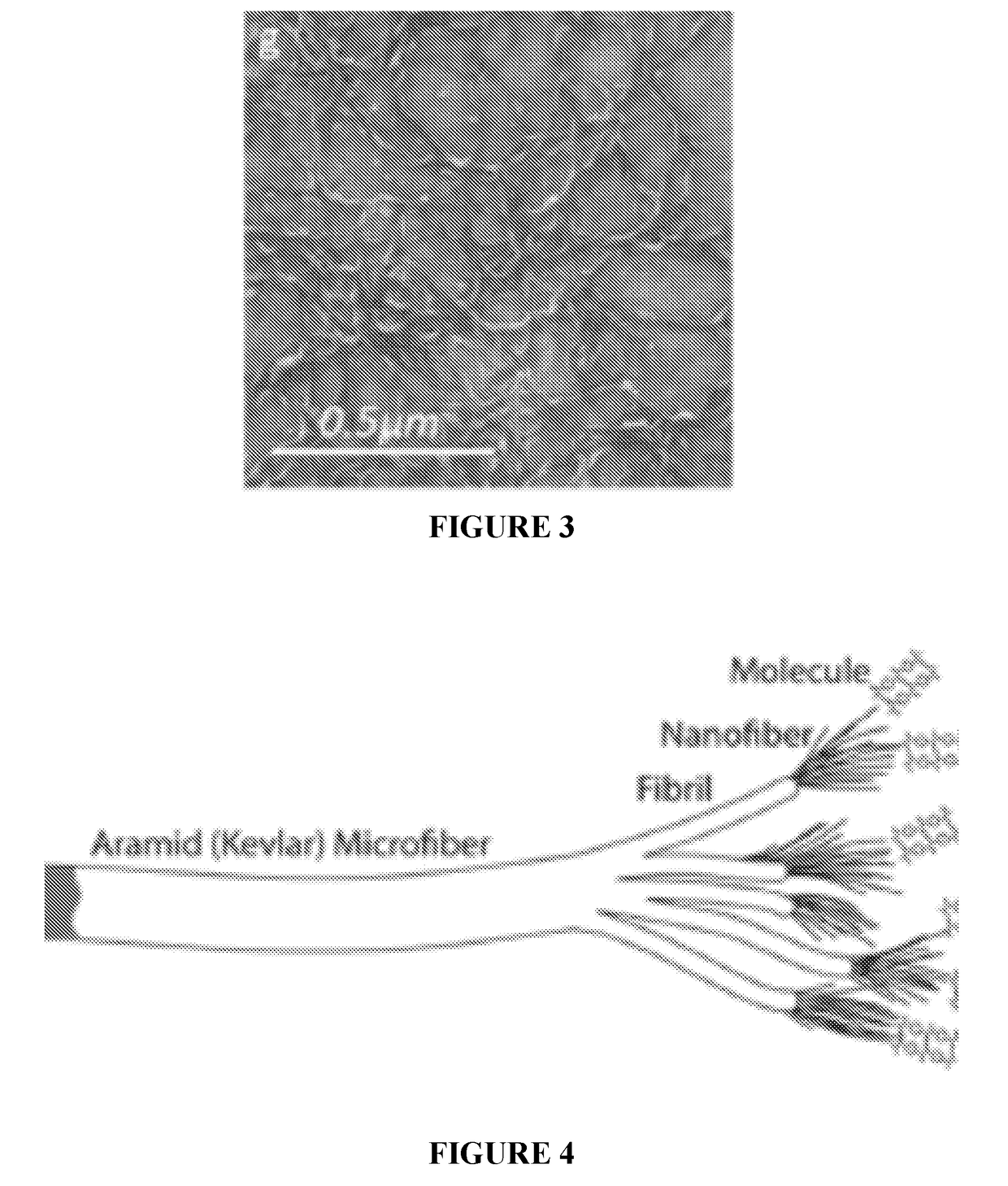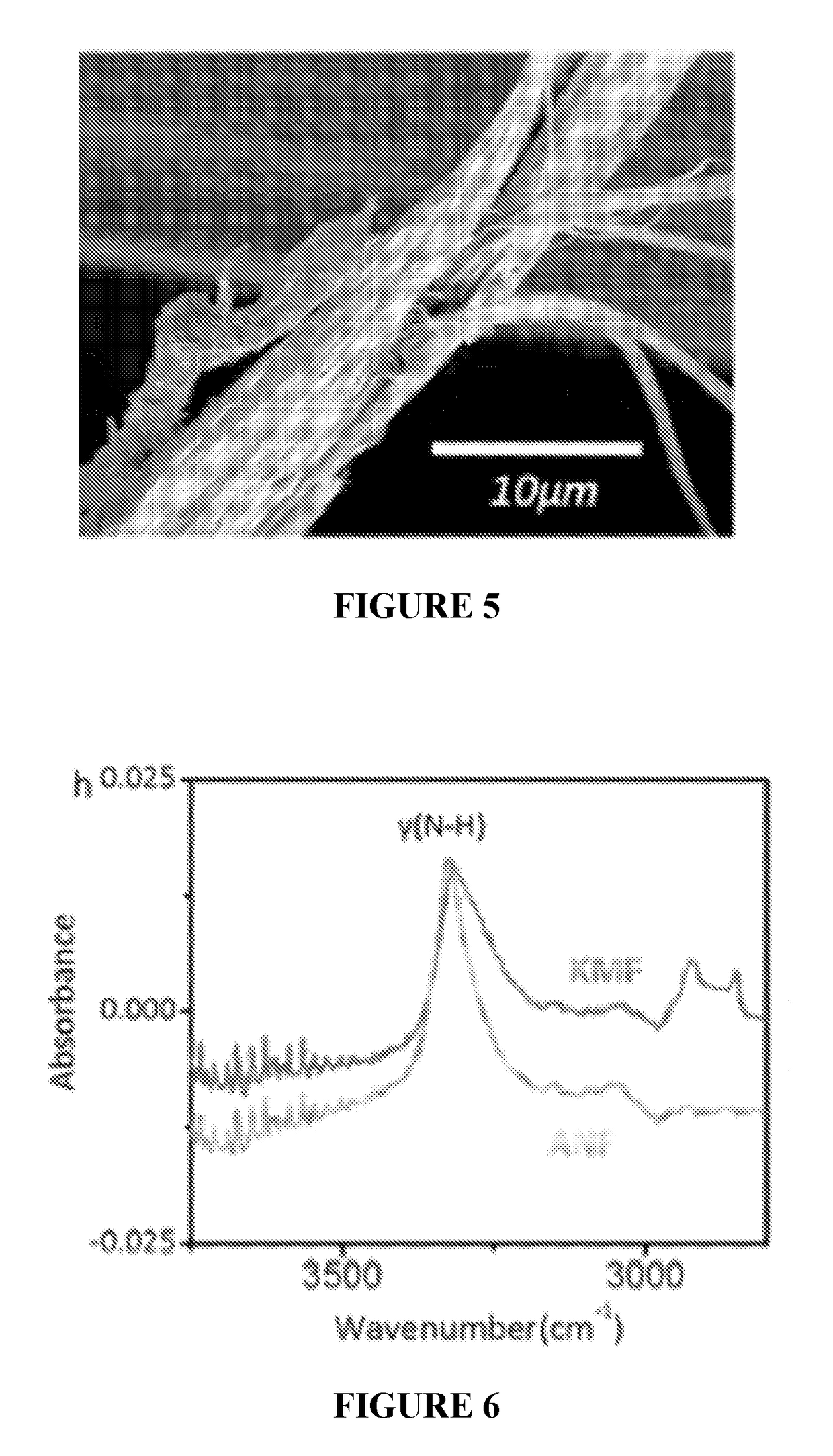Gels and nanocomposites containing anfs
a nano-composite and gel technology, applied in the field of gels and nano-composites containing anfs, can solve the problems of complex incorporation of matrix components into produced 3dns that complement the base high-strength nanomaterials, difficult to produce 3dpns, and inability to fully penetrate polymers into nanopores, etc., and achieve the effect of continuous production
- Summary
- Abstract
- Description
- Claims
- Application Information
AI Technical Summary
Benefits of technology
Problems solved by technology
Method used
Image
Examples
example 1
Composites—or ANF / EPX Composites
[0174]Branched ANF dispersion can be prepared by dispersing aramid microfiber (or commonly known as Kevlar fibers) in DMSO mixed with water and a base in specified concentrations. A subsequent solvent exchange with water leads to the formation of ANF hydrogel in a process step called phase transforming. In order to make a 3DPN in the form of ANF hydrogel coating, a thin liquid layer of branched ANF dispersion is spin-coated on a glass substrate and subjected to solvent exchange. The resulting thin ANF hydrogel can be carefully peeled off from the substrate (FIG. 23) and dried by supercritical CO2 to examine the structure (FIG. 24). In a non-limiting example, the obtained 3DPN is 57 μm thick slab with a wide range of pores defined by interconnected ANFs (FIG. 25).
[0175]To make the ANF / EPX composites, the branched ANF hydrogel layer is left on the substrate to allow the diffusion of EPX. The hydrogel is adhesive enough to the substrate to allow EPX to d...
example 2
om ANF Hydrogels
[0190]High aspect ratio plus the branched morphology makes ANF a unique nanoscale material for forming the 3DPNs. The latter can be formed in the form of hydrogels using a solvent exchange process described above (FIGS. 10, 12 and 49). In a typical procedure, a layer of water is gently sited on top of the DMSO-based dispersion phase containing 1 wt % ANF. With the slow diffusion of water, the deprotonated aramid chains are gradually reverted to their initial chemical structures by abstracting protons from water, accompanied by a color change from dark red to light yellow. The attained hydrogel is highly robust, and can sustain structural integrity even after cutting and shearing with a razor blade (FIG. 11). To further reveal the internal structure of ANF in the hydrogel, it is converted into an aerogel through the supercritical CO2 extraction (FIG. 13-15). As expected, the aerogel contains a network of highly branched ANF nanofibers entangled with each other. The AN...
example 3
on of ANF Continuous Gel Fiber
[0198]0.1% ANF dispersion was extruded from a 28 G stainless steel needle at a rate of 3 ml / h into a flow of DI water with a rate of 12 ml / h. The continuous gel fiber was immediately formed at the tip of the needle and was guided into a 0.58 mm (ID) glass capillary tube, and then collected in a DI water reservoir. The flow rate control was achieved by syringe pumps, and soft silicone tubing was used to make the connection.
PUM
| Property | Measurement | Unit |
|---|---|---|
| Fraction | aaaaa | aaaaa |
| Fraction | aaaaa | aaaaa |
| Percent by mass | aaaaa | aaaaa |
Abstract
Description
Claims
Application Information
 Login to View More
Login to View More - R&D
- Intellectual Property
- Life Sciences
- Materials
- Tech Scout
- Unparalleled Data Quality
- Higher Quality Content
- 60% Fewer Hallucinations
Browse by: Latest US Patents, China's latest patents, Technical Efficacy Thesaurus, Application Domain, Technology Topic, Popular Technical Reports.
© 2025 PatSnap. All rights reserved.Legal|Privacy policy|Modern Slavery Act Transparency Statement|Sitemap|About US| Contact US: help@patsnap.com



